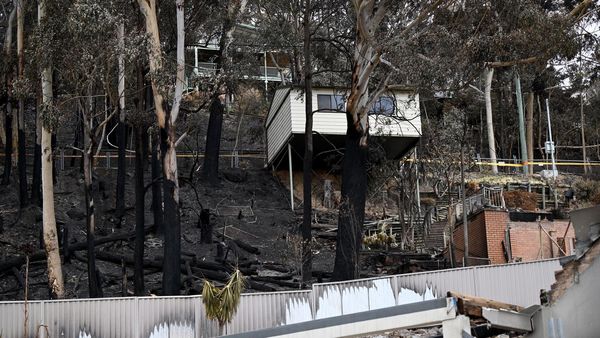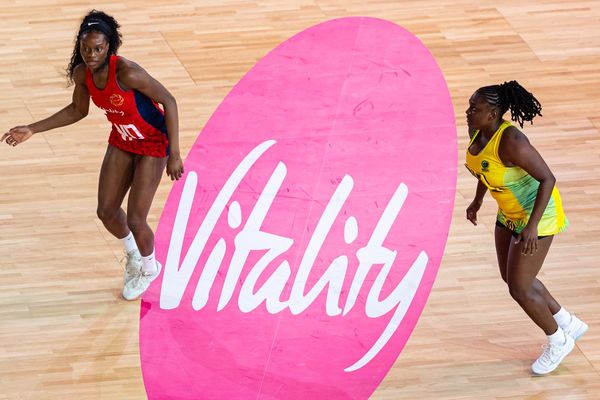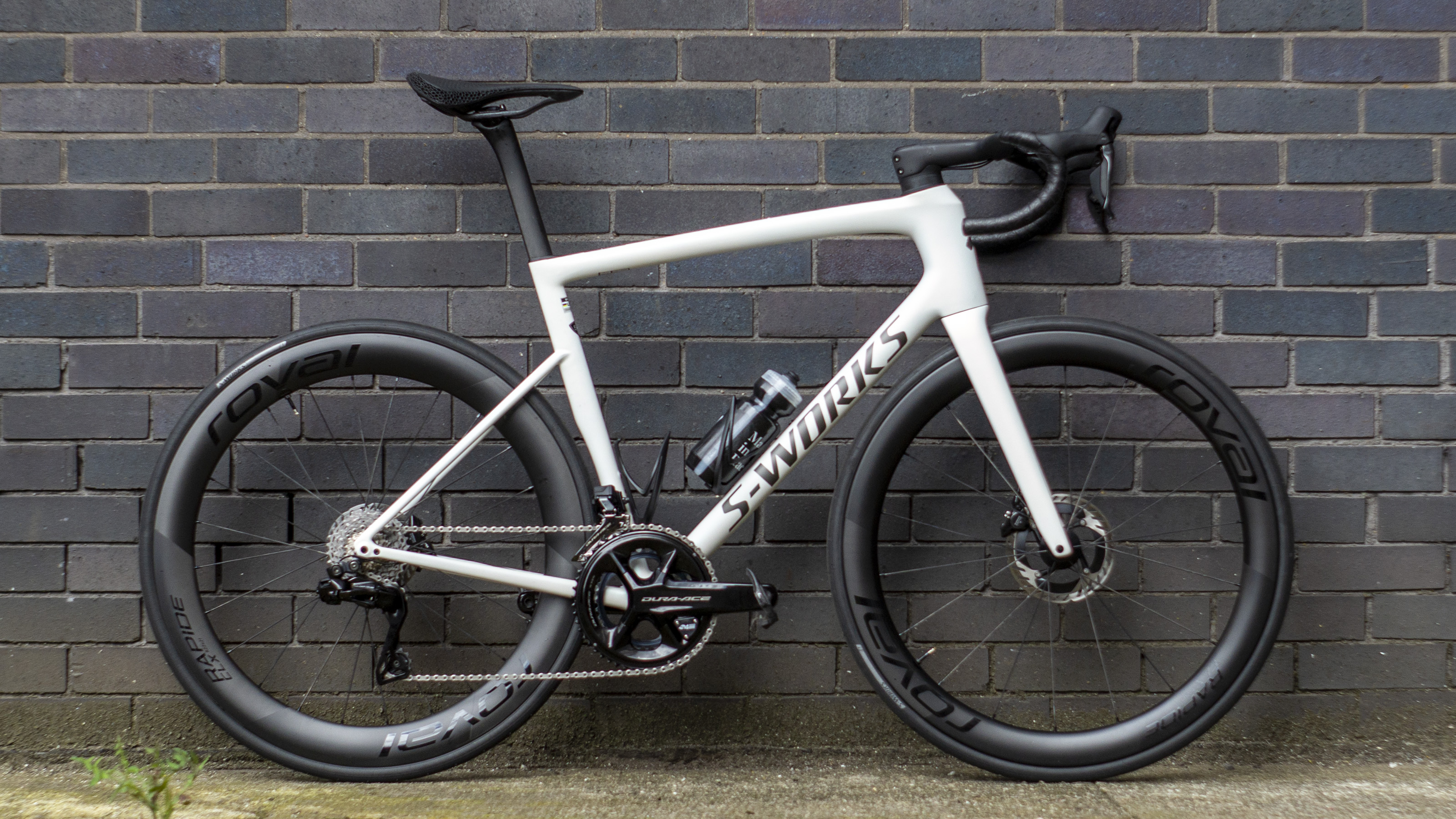
Specialized is one of the most well-known bike brands in the world, and for more than a decade, the Tarmac has been the brand's flagship race bike. Despite a seven-year stint in which it shared the top spot with the aero Venge, the Tarmac has always been the brand's best road bike. That became even more definitive when in 2020, the brand killed off the Venge, saying the Tarmac SL7 was the 'one bike to rule them all.'
The Tarmac SL8 is the next evolution of that bike, and since its launch in August 2023, I've ridden it in several guises. First in its S-Works version, with Dura-Ace Di2, Roval's Rapide CLX II wheels and the one-piece Roval Rapide cockpit. Next came the 'Specialized' frame, complete with Force AXS, a two-piece bar and stem, and the cheaper Roval Rapide CL wheels. And most recently I've been back aboard the S-Works frame, again with the Rapide CLX wheels and the Rapide cockpit, but with the latest Red AXS groupset.
I've trained, raced, and even commuted to work on them to test their ride quality, across important areas like comfort, handling, agility and power transfer. I have also taken the bike to a wind tunnel alongside the best aero bikes for some hard data to back up my testing.
Across the three builds, I've been able to tease out what separates the Tarmac platform from competitors such as the Factor Ostro VAM and the Pinarello Dogma F, as well as understand the differences between the varying specs.
To cut a long story short, the bike is largely faultless. It's lightweight, agile and really fun to ride, both on short fast rides and on longer, slower more endurance-focussed days.
In our wind tunnel superbike test, the third of the aforementioned builds came out fastest when tested with a rider so it's fair to say it's aerodynamic too.
It's a hero product, so unfortunately for most of us, it has the price tag to match. The S-Works Tarmac SL8 with Dura-Ace is currently priced at £12,000 / $14,000 / €14,000 / AU$19,900.
That's far from cheap, but there are more affordable options in the range, with full builds starting at £6,000 / $6,500 / €6,500 / AU9,400.
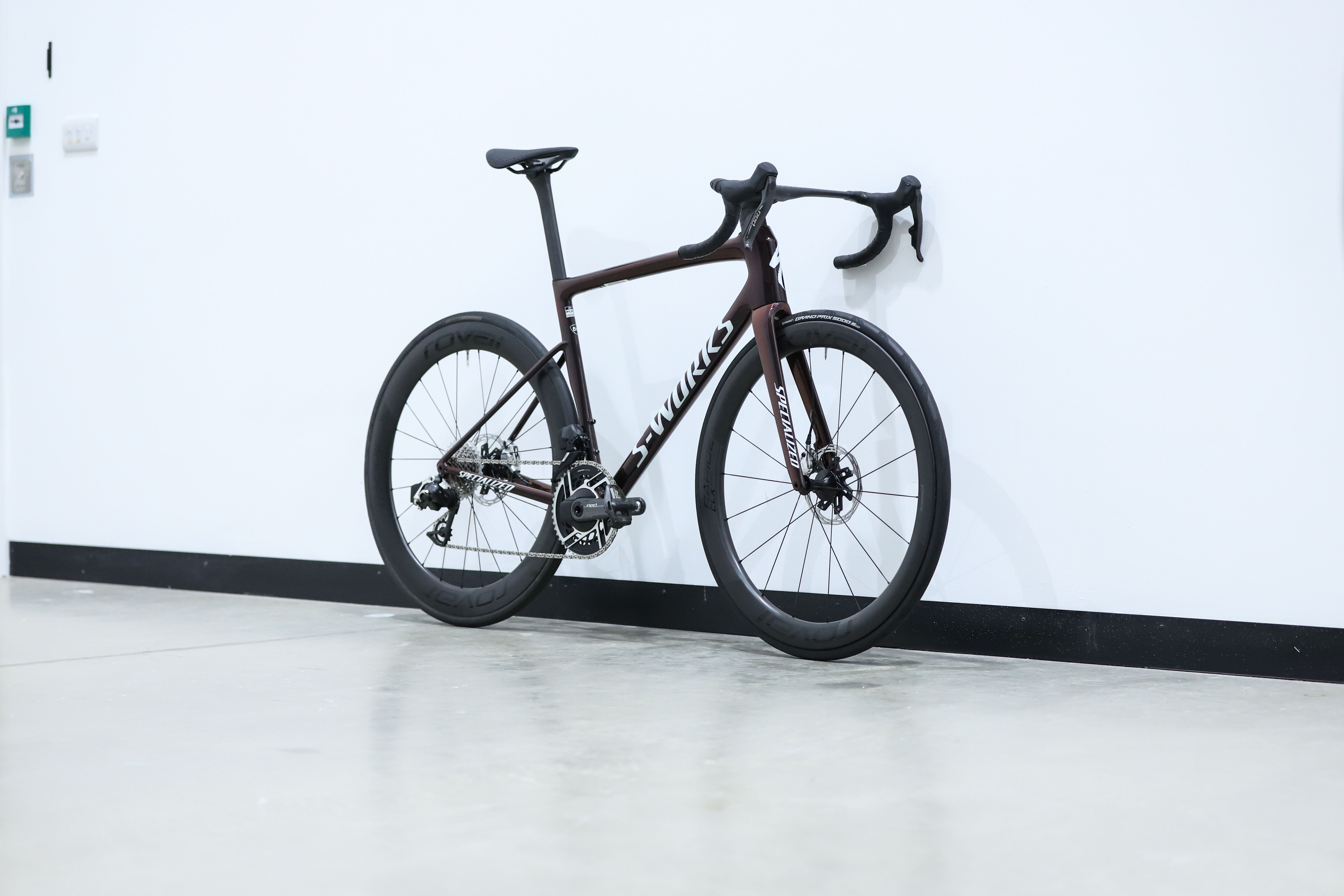
Design and aesthetics
At launch, the bike came with a series of claims that even by Specialized's own standards, were incredibly lofty.
The brand not only called it the "lightest on the WorldTour" with a frame weight of 685g, but the "world's fastest race bike" too. That's alongside a reported increase of 33% in stiffness to weight, and a 6% bump in compliance when compared to the outgoing Tarmac SL7.
Starting with weight, there's no denying the Tarmac is indeed a lightweight bike.
When we took the S-Works Tarmac SL8 with Red AXS to the wind tunnel alongside 10 of its peers, we not only tested the aero credentials (which I'll get into shortly), we also weighed each bike and the Tarmac was the lightest of the bunch... just.
The Factor OSTRO VAM - with Shimano Dura-Ace Di2 - was third-lightest, tipping the scales at 7.23kg. The Pinarello Dogma F - also with Dura-Ace - was second at 7.20kg. The Tarmac snuck in at 7.18kg. Twenty grams isn't much, and probably shouldn't affect your decision too strongly if you're on a fence between Specialized and Pinarello, but a win is a win.
One bike we didn't have on that test is the Scott Addict RC, which launched more recently in late 2024. That claims to be significantly lighter at 5.9kg for a full build, with a 599g frame. Given that Q36.5 Pro Cycling isn't a WorldTour team, Specialized's claim of being 'lightest on the WorldTour' just about holds true, although if weight really matters for you, there are lighter bikes around.
But weight isn't the only factor, and anyone looking to buy a race bike of this ilk is probably more interested in aerodynamics. Specialized says the bike will save 16.6 seconds over a 40km time trial when compared to the SL7, and in a couple of comically specific examples, 20 seconds over the Col du Tourmalet or 128 seconds over the 294km course of Milan-San Remo.
Specialized says it focussed on "aero where it actually matters," opting instead to save weight “where aerodynamics matters less or not at all." In simple terms, that means it focussed more on aerodynamics at the front of the bike - where sculpting the wind makes more of a difference - and on reducing weight at the rear of the bike.
The result of that was the introduction of the 'speed sniffer' (their words, not mine) nose cone, as well as the inclusion of the Roval Rapide one-piece cockpit on all S-Works models.
Importantly, more than half of the aero difference between the SL7 and the SL8 came via the Roval Rapide cockpit, and if you fit an out-front bike computer, you lose some of that performance.
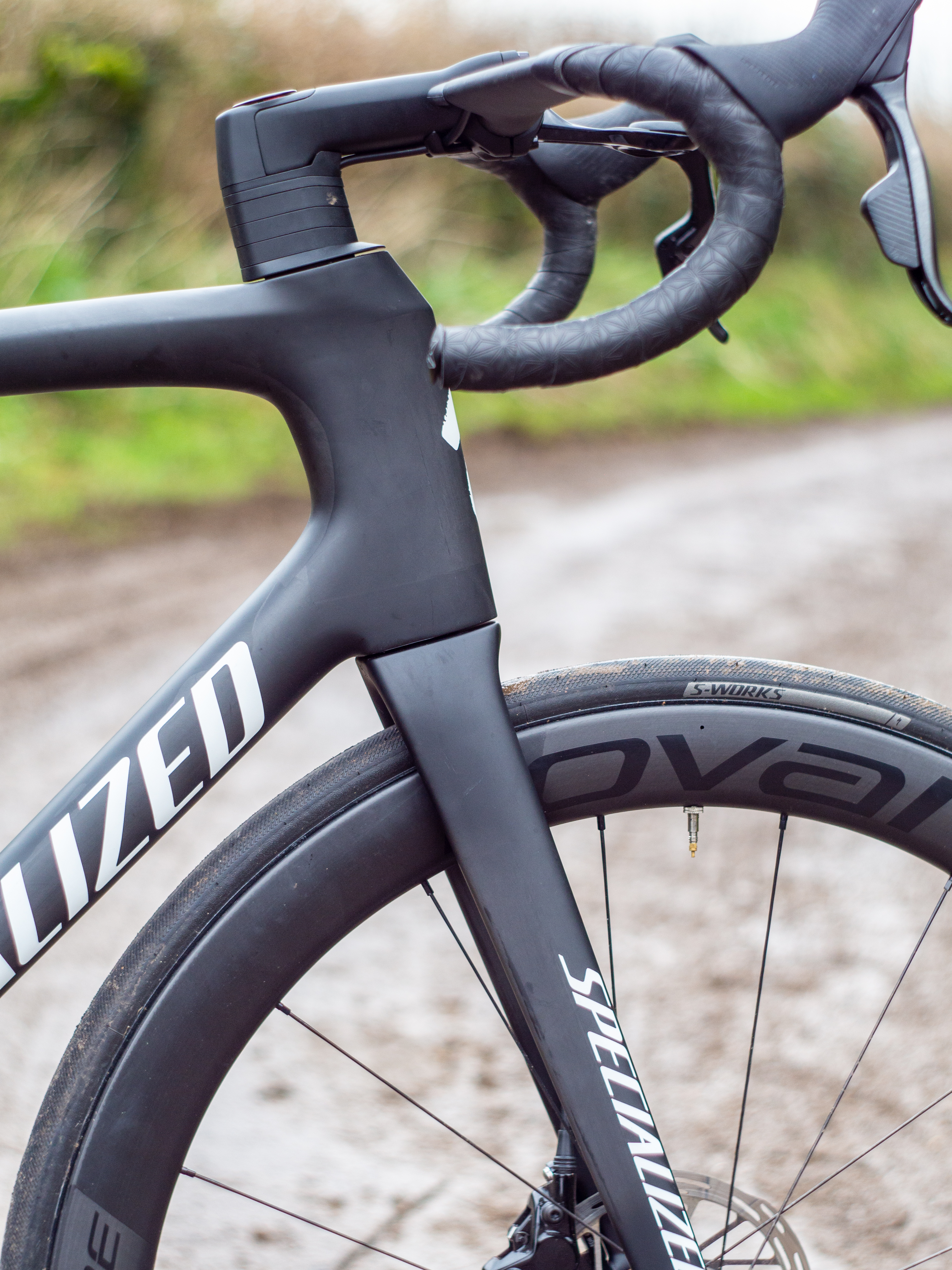
At the rear, Specialized says that the turbulent air of a rider's legs means that deep airfoil seat tubes provide vanishingly small aero gains, so instead used this area to shed weight and add compliance.
It thinned the seat tube, in turn making the SL8 seatpost inside so narrow that a Di2 battery doesn't fit inside, instead needing to be mounted to a clip beneath.
It also made the seat tube approximately 10% shallower, in turn increasing its flex, adding more compliance and comfort. I can't say I'm able to feel that specifically, but the new Tarmac overall is certainly a more comfortable bike to ride than the SL7.
The cheaper non-S-Works models use the same frame silhouette, adding around 100g in weight through the less premium Fact 10R carbon, while the S-Works frames are made using Fact 12R. They also forego the Roval Rapide one-piece cockpit and the top-tier Roval Rapide CLX wheels, and thus the aero and weight benefits that they provide.
Both tiers of the frame are compatible with electronic groupsets only. They feature a BSA threaded bottom bracket, integrated cable routing, and clearance for 32mm tyres.
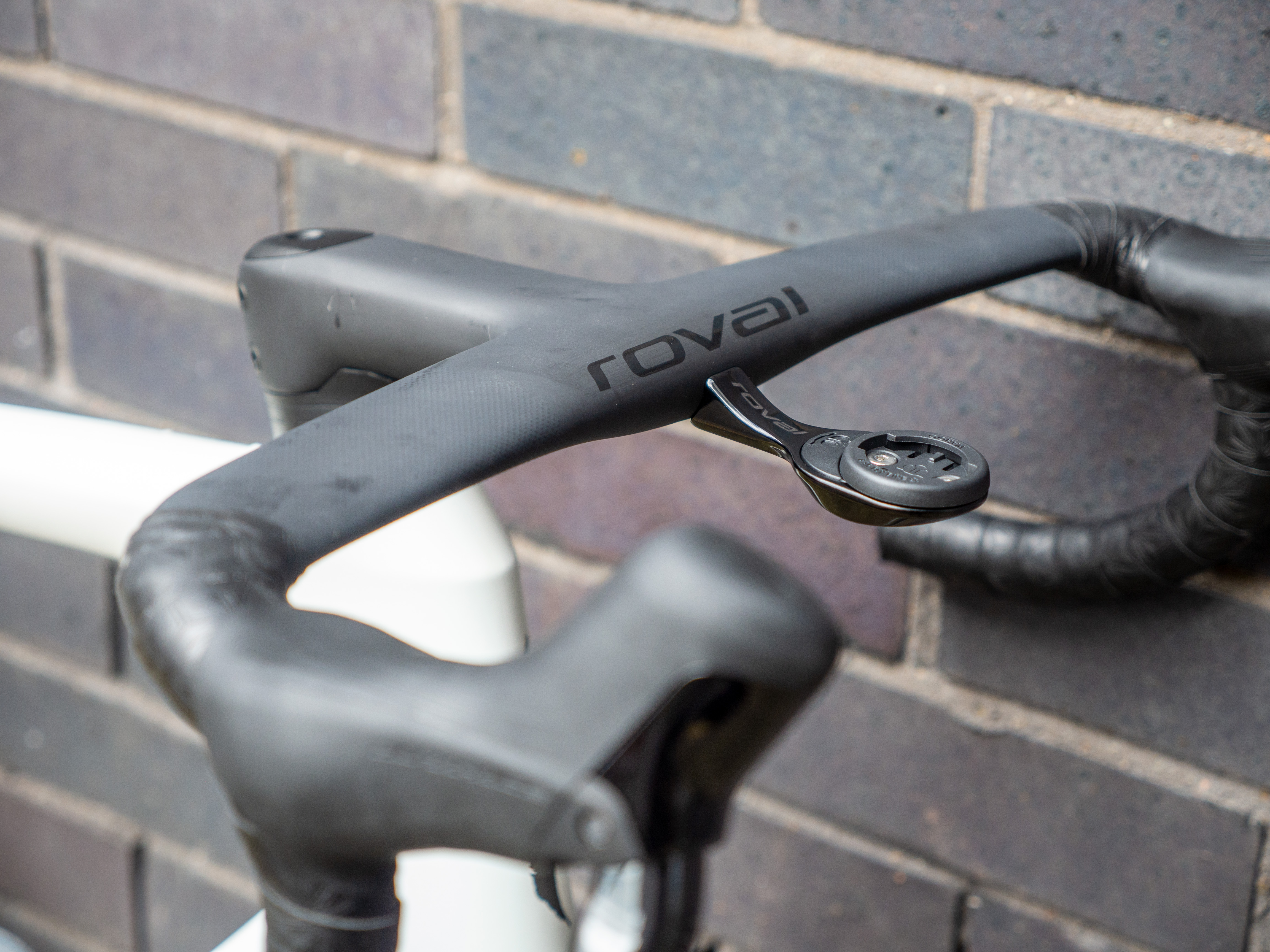
Specs and build
Off-the-shelf builds are available with Shimano Dura-Ace Di2 and Ultegra Di2, as well as SRAM Red, Force and Rival. There is no Shimano 105 Di2, nor is there a Campagnolo Super Record Wireless option. No 1X builds are available off the shelf, but the front derailleur hanger can be removed and replaced with a cover to keep things tidy and minimise dirt ingress if you'd prefer to go down this route.
Both the Specialized (Fact 10R) and S-Works (Fact 12R) framesets are available to buy standalone.
The S-Works builds come with Dura-Ace or SRAM Red groupsets, and are fitted with Roval Rapide CLX II wheels and the Roval Rapide cockpit. In the Specialized frame, Ultegra, Force or Rival groupsets are catered for, with the first two getting Roval's Rapide CL II wheelset and the two-piece aero handlebar, and the Rival-equipped spec getting Rocal C38 wheels and a round alloy handlebar. All bikes will be shipped with 26C tyres, as well as the 15mm setback seatpost. (A 0mm option is also aftermarket).
The choice of crank length, stem length and bar width on all models depends on the size you buy, and this leads me to my biggest gripe with the Specialized Tarmac SL8.
Unfortunately, there's no pre-purchase customisation available like you get at Factor, Ridley, Colnago, or in Trek's Project One programme to name a few. If you are my height (6'2" / 187cm) and ride a 58cm frame, your bike will be fitted with 44cm wide handlebars and 175mm cranks. Based on the bike fit I had last week, if I bought a Tarmac SL8 today, I'd need to sell the cranks and the cockpit and buy shorter cranks, narrower bars, and a longer stem before the first mile had been ridden.

I appreciate this is in no way a problem exclusive to Specialized - in fact it's quite a common one, but as bikes get more and more expensive, a brand the size of Specialized should lead from the front when it comes to making life easier for its customers, or they might take their spend elsewhere.
Case in point, had I bought a Factor Ostro, for example, I could have chosen those specs before buying, and had the bike how I wanted it from the moment it arrived, and not have to deal with the stress (and probable financial loss) of buying separate parts and selling my unused ones on Facebook or eBay.
Specialized does recognise that this is a problem, and is relying on retail partners to make the call on whether to swap out components as part of the sales package. To make it easier, the cockpit is now even shipped in its own retail packaging, rather than loose or attached to the bike.
It's a small step in the right direction, sure, but it's not enough. Shops shouldn't have to make that call, customers shouldn't have to hope the store manager is in a good mood that day, and that solution only accounts for the cockpit. It ignores crank length.
If I'm spending $14k on a bike from one of the biggest bike brands in the world, I should be able to choose which components I get.
Why not give me full customisation as an option, let me upload my bike fit data, choose my components, swap out my tyres, and heck, while we're at it let me upgrade to the fancy Roval Rapide CLX Team wheels, add some Supacaz bottle cages and throw in an S-Works Evade? I'd be happy to wait a month for it all to arrive because I've probably been dreaming about this purchase for years anyway.

Performance
If and when you eventually get the Tarmac SL8 set up how you want it, you're in for a real treat. While it might be hard to crown it the best, it's very comfortably one of the best road bikes in the world right now.
In our wind tunnel test, where we tested both with a rider and then without, the Tarmac didn't come out at the top of the pile in all tests, but it fared very well.
I've already mentioned that it came out as the lightest on test. And in the tunnel with a rider, the Tarmac came out fastest. The average CdA (Coefficient of drag x Area) across the various yaw angles (the direction that the wind hits the rider) was 0.3404, and compared to our baseline bike, would save 24.47 watts at 40km/h. The caveat to that result, however, is that our margin for error was quite high (due to the increased variability caused by the rider on the bike) and so statistically speaking, the result was a tie.
Without a rider, where there was a smaller margin for error, the Tarmac landed a more mid-pack result, finishing approximately 3 watts slower than the fastest on test, the Factor OSTRO VAM. Again, there are caveats, and in this case, it's that bikes don't pedal themselves, so this doesn't take into account any interaction between the bike and the rider's legs.
Regardless, for a bike like the Tarmac - the lightest on test - to sit amongst bikes like the Trek Madone, Giant Propel, Scott Foil and Cervelo S5, it is a solid result that confirms its status as one of the best on the market.

Coupling that data with its ride quality, the Tarmac continues to cement its place among the frontrunners.
As mentioned earlier, those who have ridden the SL7 will get aboard the SL8 and feel a sense of familiarity. I have ridden the S-Works SL7, and I used to own an S-Works SL6, so I felt right at home on the new bike in all its guises.
Right from the first ride back in 2023, and through my use of the Force-equipped model and latterly the Red-equipped S-Works model, the thing that continues to stand out is the bike's handling. The Tarmac has never been bad at going around corners. In fact, it's always been genuinely excellent and even today I daydream about my racing days railing hairpins on my SL6 and coming out of the corner carrying more speed than anyone around me (Turbo Cottons are still excellent tyres).
If you asked me where I thought there might be room for improvement when designing the SL8, handling would be right at the bottom of my list.
But the Tarmac SL8 is another level above, especially the S-Works models with the Roval Rapide one-piece cockpit. The new Pinarello Dogma F comes very close, but nothing else I've ridden matches the telepathic immediacy it provides when hitting corners at speed, like a guiding hand pulling you through the apex.
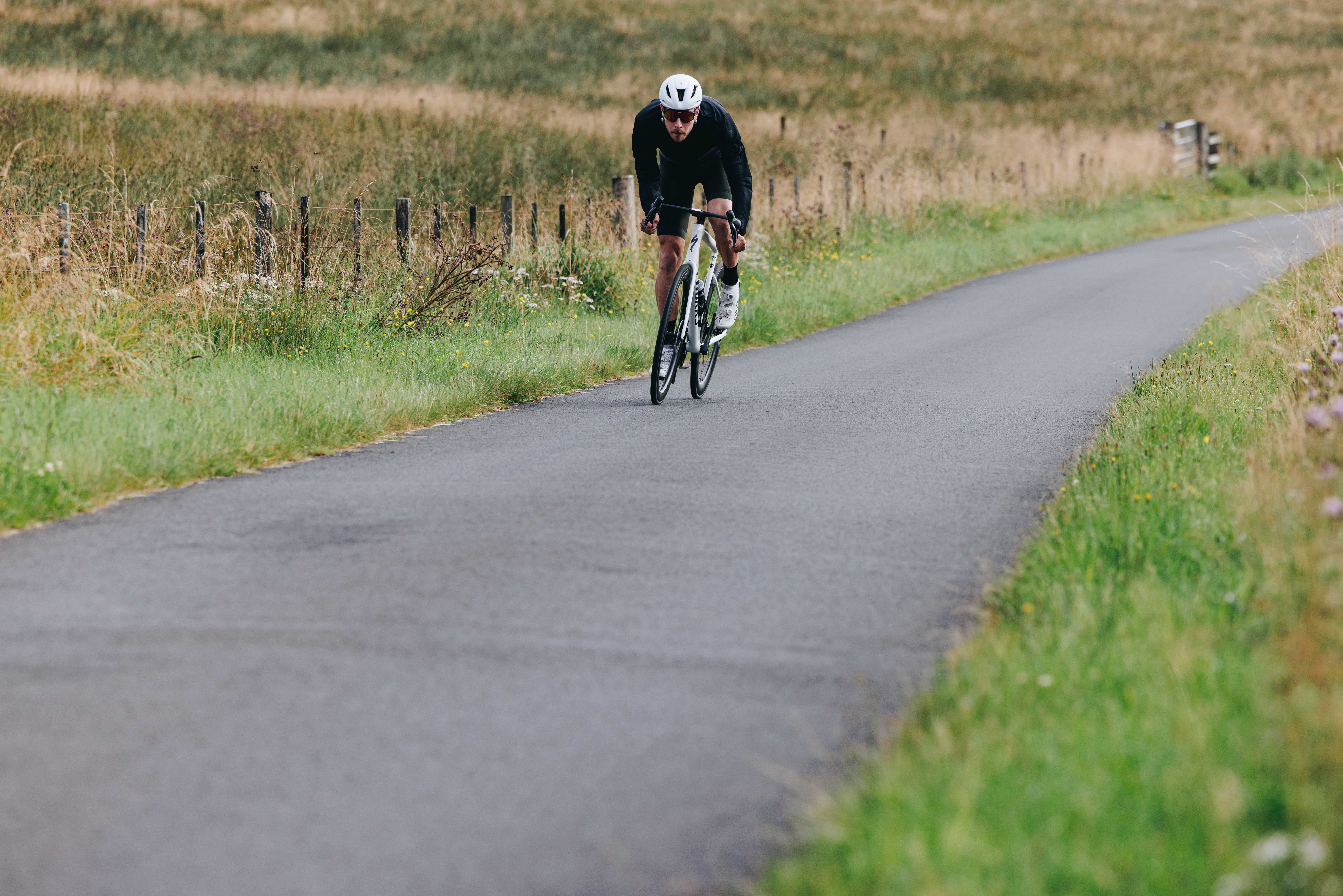
When sprinting, both uphill and on the flat, the stiffness at the rear of the bike is excellent too. Given the pencil-thin seatstays and not-much-bigger chainstays, you'd be forgiven for expecting a bit of flex through the rear of the bike, but it simply isn't there. It's not quite as snappy and reactive as the lightweight Factor O2 on steep gradients (that bike largely benefits from the 1100g wheels), but when you decide it's time to spice up the club ride with a town sign sprint, or you need to sprint for the win in your local crit, the bike is very much in its element.
It also confirms the more valuable insight that the bottom bracket just felt rock solid and the power transfer felt immediate. The front-end stiffness that aided the handling was also apparent here in high-power efforts, yanking on the bars to get as much power out as possible, they just felt immovable.

On the compliance and comfort front, however, it's worth reiterating that this is a race bike. It's stiff and purposeful so if you roll over a rough surface, you're going to know about it. I'm not going to pretend I can 'feel' a 6% boost in compliance but I did find it to be comfortable.
The logic of a shallower seatpost adding compliance adds up, and my experience with the bike does nothing to oppose the claim. I've done short rides, long rides, races and more aboard the Tarmac SL8, and not once have I found it jarring.

Value
At £12,000 / $14,000 for the S-Works models, with a slight uplift in some territories for the newer version of SRAM Red AXS, the price tag of the Tarmac SL8 is never going to be deemed cheap.
Crucially though, the price is in the ballpark of its competitors. The exact comparisons depend on your spec choices and your territory, so I shan't go into too much detail here. American buyers will often find Italian brands such as Pinarello or Colnago costing more on average, while European buyers will often find the opposite to be true. The Factor OSTRO is an interesting consideration in this mix: the UK and USA price undercuts that of similarly-specced Tarmac SL8 models, while offering the customisation of specs.
And that's where the Tarmac SL8 falls down the most, in my opinion. Your local bike shop might allow you to swap out the cockpit, perhaps even the cranks, to ensure your new bike fits properly, but you shouldn't have to rely on that. If you want to buy it directly from the Specialized website, for example, you're currently forced into certain spec and geometry choices that to fix, will add to your overall outlay.

Verdict
The Specialized Tarmac SL8 is not the out-and-out lightest, the fastest, nor the most comfortable road bike on the market, but the way it combines those important metrics to make a well-rounded high-performance superbike is impressive.
The price isn't beyond that of its competitors. I just wish Specialized would evolve with the needs of its users and offer a custom-build program when buying so that consumers aren't forced to buy components they don't need or want.
Once you get past that hurdle though, the Tarmac is fun, fast, lightweight, and its ride quality is superb. Its handling is unmatched, and we have the data from the wind tunnel and the weighing scales to back up its position among the best road bikes on the market today.



